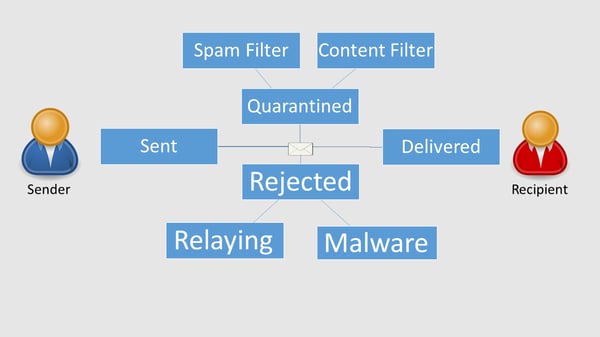If you’re like me, you want an email client that’s easy to set up, easy to use, and easy on the eyes, and if it works well with MDaemon, then that’s a huge plus!
By Brad Wyro posted in Email How To, MDaemon Email Server, Product Updates, Email Server
If you’re like me, you want an email client that’s easy to set up, easy to use, and easy on the eyes, and if it works well with MDaemon, then that’s a huge plus!
By Brad Wyro posted in Cybersecurity, MDaemon Email Server, Product Updates, Security Gateway for Email, Email Server
As our products have evolved over the years, with new features added regularly, older versions of our software are eventually no longer supported.
By Brad Wyro posted in MDaemon Email Server, Product Updates, Email Server
To ensure MDaemon and its plugins provide the most up-to-date security and best performance, we often provide maintenance updates to help our customers get the most out of their business email and collaboration server.
By Brad Wyro posted in Email Security, Cybersecurity, Stop Spam Email, Phishing
A brief glance through my Spam folder in MDaemon Webmail today reminded me of the need for on-going education on the topic of phishing and Business Email Compromise (BEC) scams. Because businesses have already lost millions of dollars to these scams and continue to fall victim every day, it bears repeating that, while spam filters and secure email gateways continue to improve, no solution is 100% fool-proof.
By Brad Wyro posted in Email Gateway How-To, Email How To, Security Gateway for Email, Tutorial

Most of our customers are small-to-medium businesses with limited IT budgets across a variety of industries – including healthcare, education, manufacturing, and government. Having a limited IT budget often means having limited staff available for troubleshooting email or tracking down messages, so when considering which email gateway/spam filter you want for your business, one of the main criteria to consider is how easy it is to find messages for your users. Users who are expecting business-critical messages need to know ASAP what happened if that message is not delivered. With Security Gateway, it’s easy to find out if a message was rejected, quarantined or delivered. If it was rejected or quarantined, color-coded transcripts make it easy to determine exactly why the message was not delivered.
By Brad Wyro posted in MDaemon Email Server, Product Updates, Email Server
This week, we released version 19 of the MDaemon Email Server, with new features that benefit administrators and end users. The following is a summary of key improvements for email security and productivity. You can view the complete list of new features and updates in the MDaemon release notes.
By Brad Wyro posted in Email How To, Email Security, Cybersecurity, Stop Spam Email, Spear Phishing, Phishing, Email Security Best Practices
Whether you run a Fortune-500 organization or a small boutique, by now you should be aware of the threats posed by cyber criminals to trick you into clicking a link, downloading an attachment, or parting ways with your money.
By Brad Wyro posted in Product Updates, Security Gateway for Email
The latest version of Security Gateway for Email Servers includes new cloud services, expanded Data Leak Prevention rules and integrated archiving features to help companies affordably protect user email.
By Brad Wyro posted in Email Security, Two-Factor Authentication, Email Best Practices
In part one of our three-part series on Business Email Compromise (BEC), I explained what a BEC attack is and provided examples and statistics. As you’ll recall from the examples discussed, businesses have suffered staggering losses to these attacks, and while users are becoming more aware of them, their own human nature dictates that these threats will continue. In fact, a recent report by Get Safe Online indicated that over a third (37%) of employees don’t know what to look for to identify common email scams. The report also stated that one in 20 email fraud victims were so ashamed that they hid their mistakes from their colleagues.
By Brad Wyro posted in Business Email Compromise, Email Security, Spear Phishing, Phishing, Email Security Trends
This week, we continue our series on Business Email Compromise. Click here to read Part 1, which includes an overview and various statistics on this growing threat.
MDaemon Technologies is a pioneer in developing email and email security software helping to protect customers from evolving cyber-security threats. Its products and services are trusted by thousands of organizations in over 140 countries. For more than two decades, the company’s products have been developed with the ongoing input of IT professionals who demand reliable, affordable software that requires minimal effort to manage.
The software can be deployed in virtual, hosted cloud, on-premises, or hybrid network environments. The company sells its software and services directly and through a network of global channel partners.
For more information, visit www.mdaemon.com.
Copyright © 1996-2025 MDaemon Technologies. View privacy policy.